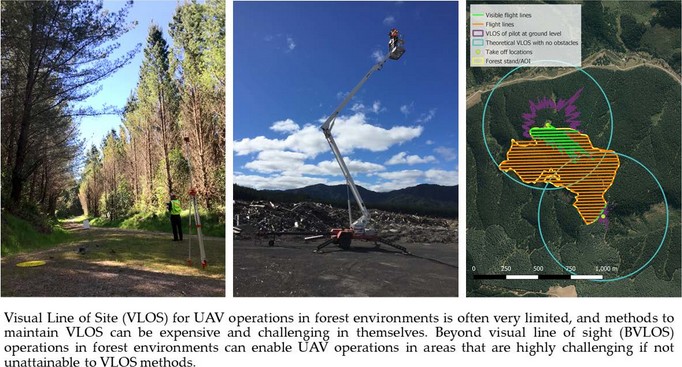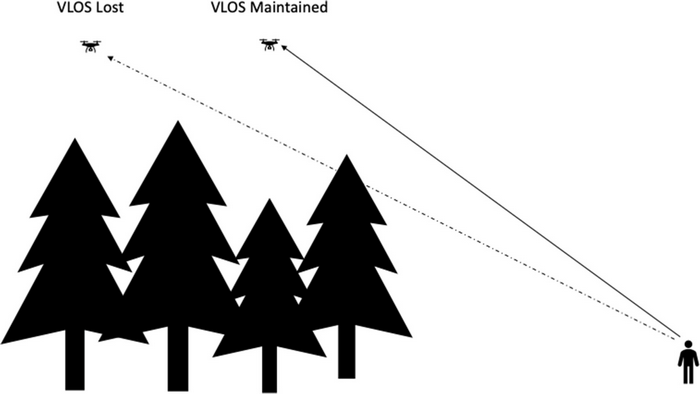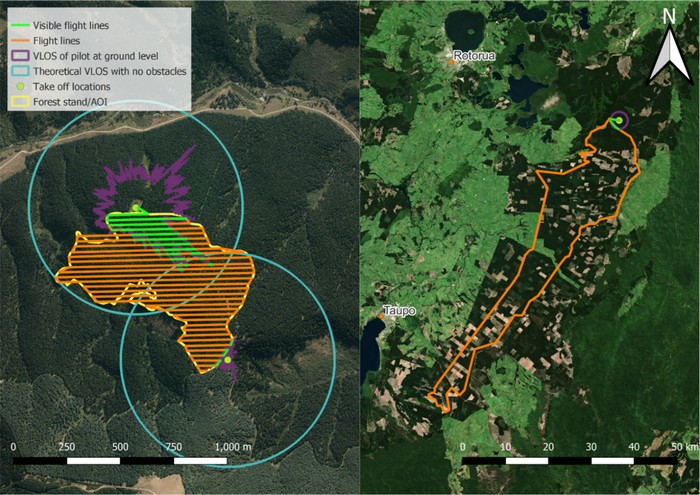Where’s My Drone? Ground-breaking article aims to advance technology in forestry
Forest environments are notoriously difficult for drone (unmanned aerial vehicle - UAV) operations. Aside from the trees themselves, hilly terrain, remote areas provide challenges for drone operators. Add in the complexity of technical, operational, and regulatory considerations in a forest environment and it becomes a challenge to operate UAVs in forestry when visual contact is not maintained.
A recently published review article shows how many challenges facing forest researchers and practitioners can be overcome using beyond visual line of sight (BVLOS) UAV operations.

There are many applications of unmanned aircraft within planted and indigenous forests. These include wildfire monitoring and suppression, inventory and health assessments of forestry plantations, wildlife research, flora and fauna conservation efforts, dropping seed capsules, spraying of herbicides to kill invasive plant species, and dropping poisons and traps for pest control, among others.
UAV operations internationally are governed by aviation rules that restrict their range to areas in which the pilot is able to maintain visual line of sight with the craft in order to manage potential risks.

The article was authored by Robin Hartley (Scion), Isaac Henderson (Massey University School of Aviation), and Chris Jackson (Jackson UAS Limited). Each author provided their unique contributions of expertise related to forestry, aviation safety, and unmanned aircraft operations. The article was published in Drones and was selected as a feature article for the journal’s Drones in Agriculture and Forestry section.
Lead author, Mr Hartley, explains the significance of the contribution
“I have been researching the idea of BVLOS in forest environments for a few years now and one thing that has struck me is that there has not been any single place for practitioners or researchers to look if this is something that they are considering. Collaborating with Isaac and Chris has been great as between us we have been able to pool our collective resources into an article that will be a very useful starting point for others who are wishing to follow in our footsteps and/or apply it to their operations.”
The article emphasises how BVLOS UAV operations help overcome the challenges of operating in the forest environment.
Mr Hartley explains, “Having flown UAVs in a variety of forest environments for the past six years, I have a very good understanding of the frustrations that can come with trying to maintain visual line of sight. It is generally standard practice to do a desk-based assessment of an area, or even a field trip prior to accepting the work to see whether it will even be possible to capture data there with a UAV.
We have experimented with various methods for maintaining visual contact by raising the pilot up into or above the canopy, however, this is not always possible and so BVLOS has always appealed as an effective way to apply UAVs to almost any sites.”
The article also outlines the international regulatory environment related to BVLOS UAV operations and some of the technological, operational, and other considerations that need to be taken into account when taking a risk-based approach for conducting such an operation.
Massey University’s Dr Henderson explains the importance of this approach.
“Most literature related to BVLOS UAV operations is focussed only on technological solutions that may help to safely conduct such operations. However, you very seldom read about the operating procedures and policies the organisations themselves need to ensure that they achieve a suitable level of safety. Aside from its contributions to forestry, this article also helps advance the importance of understanding airspace requirements, risk assessment, and human factors considerations related to fatigue, multi-crew operations, training and competency requirements, among others. In this sense, this article appears to be the first to make a holistic appraisal of BVLOS operations”.

Mr Jackson, who runs his own company involved in repair, maintenance, inspection, and training related to unmanned aircraft, provided a practitioner’s point of view.
"It will be exciting to see what the very near future holds for BVLOS UAV operations, with forestry providing some unique challenges as well as opportunities", he says.
Mr Hartley agrees, adding “As the managers of plantation and native forests move to adopt UAVs across the industry to replace traditional, field-based inventory and quality control procedures, the BVLOS issue is going to become apparent pretty quickly, and it is hoped that this article will be a solid first step in helping practitioners and researchers to confidently stride into this new space”.
The full article is freely available here: https://doi.org/10.3390/drones6070167
Similar read:
Exploring the ways drones can be utilised in the forestry sector (massey.ac.nz)
